Hegra maltøl at Granås Gård
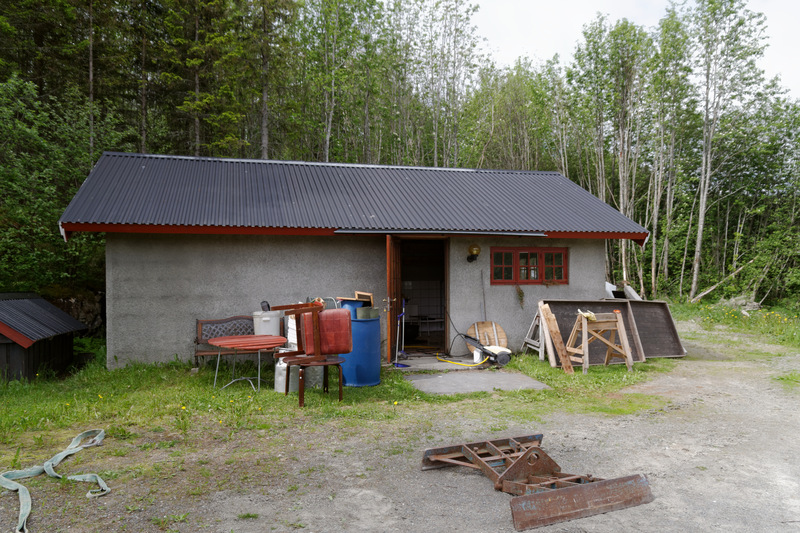
Såinnhus at Granås Gård |
Our final stop on the trip was actually the first to be planned. Morten Granås has made a small business out of his såinnhus (malt house), receiving visitors on tours of the såinnhus, and so he's perhaps the best-known farmhouse brewer in Norway. He was in the book that roused my interest in farmhouse ale, and the Beer Trotter visited him a couple of years ago. So for once we are visiting a brewer who is already well documented, but I want to set out my own observations. (This is part 9 of the Norwegian farmhouse ale trip.)
We're met in the farmyard by Morten Granås himself, a tall man in his 60s. He looks like the archetypal jovial farmer, but is in fact a former technical chief at Norwegian TV, now retired. Compared to Roar Sandodden Morten clearly belongs to an earlier generation of brewers, but he's brewing in the same tradition. He learned malting and brewing from his father, and from what I can tell he's firmly in line with local tradition. His beer really is a true "stjørdalsøl" as it's brewed today.

Morten Granås |
From the outside, the såinnhus looks very different from the three såinnhus we've already seen, being a small concrete building, built in 1987. The inside, however, is familiar. His malting oven almost exactly like that of Roar Sandodden, except it's older, and darker from almost three decades of smoke. The brick foundation, the positioning of "kjerringa" (the fireplace), the wooden frame on top: this is all the same. Morten tells us there are 3500 holes in the boards in the malting frame, so building one of these is a lot of work.
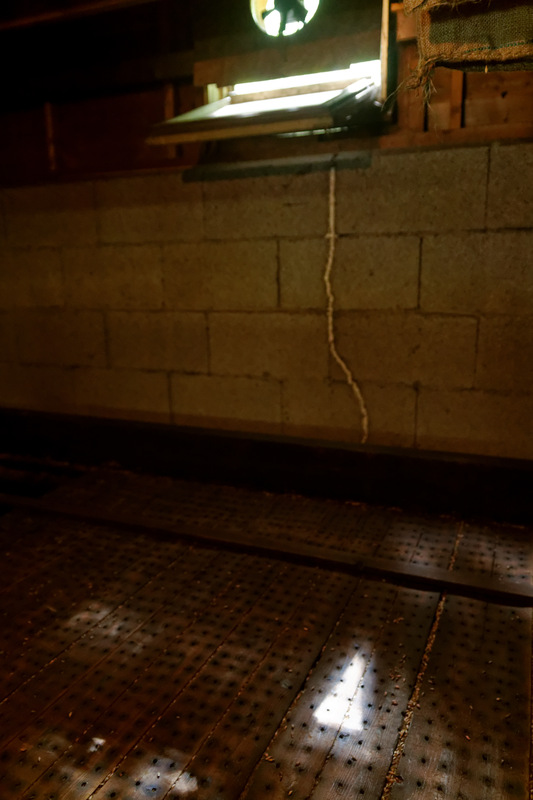
Malting frame on top of oven |
The malting is clearly a lot of work, too. He buys Finnish 6-row barley at a local store, and prefers that because of the higher starch content compared to Norwegian barley. He soaks it for about three days, then lets it sprout for about a week while turning it manually. He dries it at about 55-60C (measured in the middle) for 15-18 hours
The drying produces a lot of smoke, so he has to call the local fire department beforehand, in case someone mistakes it for a real fire. And just before we visited him he actually had a fire, where some of the boards in the malt oven burned. Malting is an activity notoriously prone to fires, but this is his first in several decades of malting.
During drying the sprouts and the hairlike roots are burned to a cinder, and these must be cleaned off afterwards to avoid giving the beer an unpleasant burnt flavour. Not everyone bothers to do this, he says, so their beer is far too smoky. Just like Harald Storli and Roar Sandodden said. He gives us a plastic bag full of burned sprouts and roots, and the smell is rather like tobacco. I can see why people might not want this in their beer. To remove these he uses a machine built by a local guy, who builds them out of chicken wire and the driveworks of old washing machines.
From the malthouse the malt goes into the brewery, which again looks like just about all the other ones we've seen on the trip. There's an iron stove, a metal kettle, and some slightly more modern-looking plastic vats and a metal tun. The brewery also contains a big sofa and some chairs, since it's used as a kind of social gathering place for the neighbours.
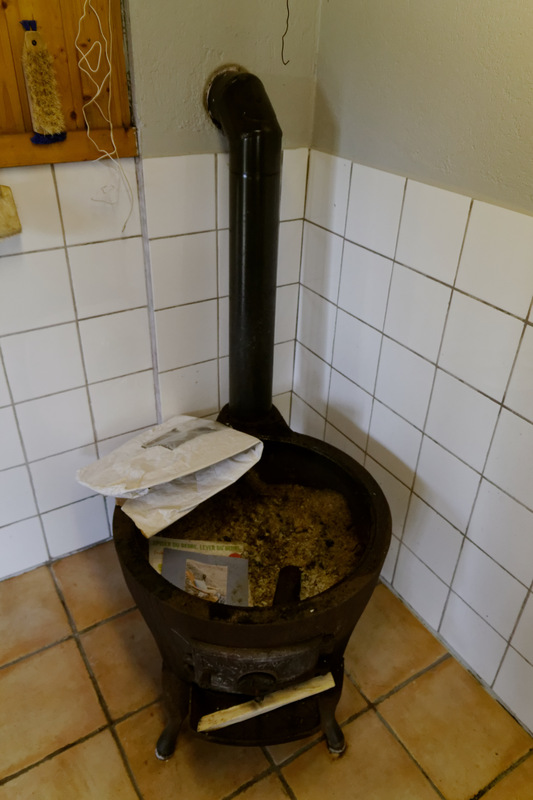
Brewing oven |
The brewing process is mostly straightforward. He does a quick mash at about 65-68C, unlike others in the area. Then he boils the beer for roughly an hour. He uses nearly 100% his own malt, but may add a little pilsner malts if it's too burned or smoky. To even out inconsistencies he mixes malts from different years. He ferments with baking yeast, and the hops are (surprisingly) Cascade pellets. He's very sparing with the hops, though, as he says he doesn't really enjoy the flavour.
He brews about 3-3.5 liters of wort from each kilo of malts *, which he says gives about 4.7% alcohol. For more alcohol you'd have to use sugar, he says, then drily adds that before Christmas the local store will import large amounts of Dutch brown sugar. The obvious inference is that the locals like their Christmas beer strong.
According to Morten the tradition was very close to dying out altogether. In the 1950s there were only four active såinnhus in the area. Now there's 47-48 of them in Stjørdal. There are four counties in the area with brewing traditions, but around them there's nothing. "Those are moonshine villages," he says, smiling.

The rest of the brewery |
A week ago Morten got a license to sell his beer, which has created quite a stir locally. It was mentioned in the newspapers, and now people have started calling him and come driving up to the farm. It's clear that the locals appreciate the local beer traditions. In fact, it turns out the local mayor is also an avid home brewer and has been extolling the stjørdalsøl in his National Day speeches.
Eventually, we have to go, and with that our final brewery visit on the trip is over. As we're leaving Morten gives us a bottle of his beer in the traditional packaging: a 1-liter plastic Coke bottle. Jørn drives us to Stjørdal, where we take the train into Trondheim. After dinner and a quick round of the bars we assemble in a hotel room for a tasting of the beer.
Visually, it was very similar to the other beers we'd had: small beige head, hazy opaque reddish body. As expected, for a beer with no filtration and very little carbonation. The aroma combines alder smoke with banana-like fruit, plus some roasty lingonberry notes. I assume the banana is from the baking yeast. The flavour is similar: sweetish fruity wild berries. The finish is long lingering smoky ashy juniper, with the ash kind of settling in the mouth. I can only imagine what these beers are like when people don't remove the sprout and the tendrils. Still, although it's powerfully smoky I find there's a good balance between the smoke and the fruity flavours.
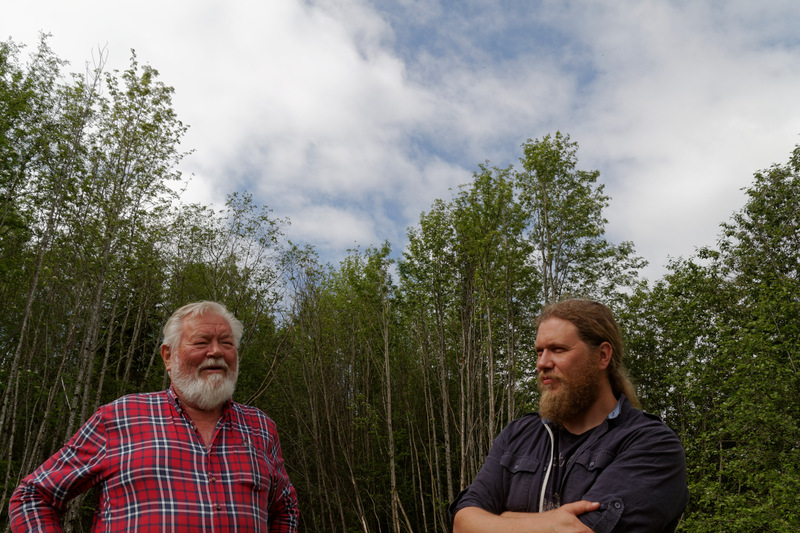
Morten and Jørn |
I first had this beer in 2012 and was really amazed. Morten Granås talks about the importance of a balance of flavours, and how the smoke shouldn't be too prominent. He's really achieved that, and the result is surprisingly refined and easy to drink. People have this image of farmhouse ales as raw and rustic creations, but this beer (like many of the others we tried) is a sophisticated and harmonic beer. It's totally unlike any commercial beer I've ever had, and rather like a more polished descendant of Harald Storli's raw ale.
Watching Martin taste the beer was interesting. He was completely blown away, smelling the beer over and over and over, while laughing to himself. Like me he was impressed by the harmony and the smoke character. After we'd finished the beer and were drinking some of the remaining Norwegian craft bottles we'd dragged around with us Martin kept smelling the empty bottle and smiling with happiness. The next morning, in the taxi on the way to the airport, Martin suddenly turns around and tells me "it smelled just as great this morning."
You could say the beer made an impression.
And with that, the tour was over. The only thing that remained was to return to Sigmund in Voss to taste the beer we helped brew, and bring some bottles of it with us. That means this is the last brewery visit post in the series, and after this we'll shift to posts analyzing what we've learned.
(Martin's blog post about the visit.)
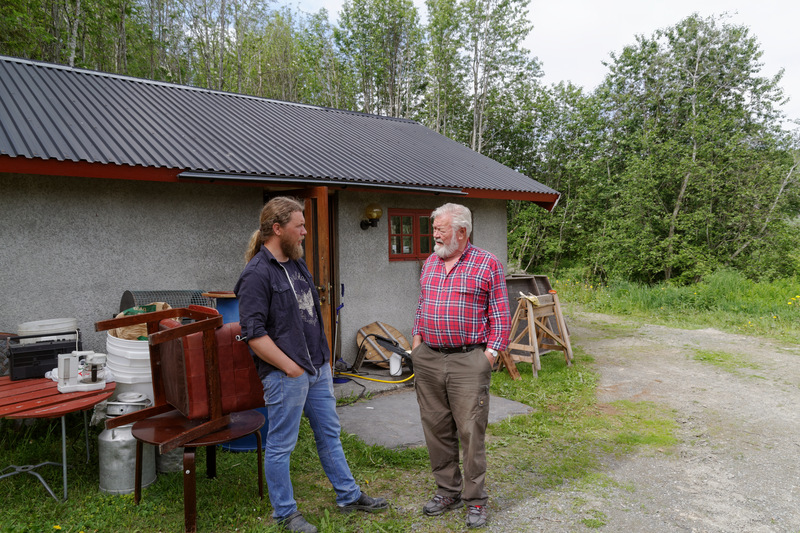
Morten and Jørn |
Similar posts
Stjørdalsøl — the tasting
During our 2014 farmhouse ale expedition, Martin and I visited Stjørdal, a region in Norway famous for the many farmhouse brewers who still make their own malts in the traditional way
Read | 2017-03-09 14:58
Alstadberger
Driving hurriedly on from Storli Gard, we arrived at the island of Tautra outside Trondheim late at night
Read | 2014-09-03 19:59
Dånnåbakken såinnhuslag
They call themselves Dånnåbakken Såinnhuslag, the group of 4-5 brewers and malters who share one brewery and malt kiln
Read | 2017-05-07 14:55
Comments
Shelby F Logan - 2019-07-07 02:44:21
Do you know if Morten Granas still opens his såinnhus to visitors? If so, how do I go about coordinating?
Thanks in advance for your help!
Lars Marius - 2019-07-10 18:49:15
@Shelby: I think the best way is to email him at morten.granas [at] ntebb.no. His English might not be the best, so try to keep it simple.
MH - 2019-08-01 11:55:17
Hi, is this correct or should it be reversed? "He brews with a ratio of about 3-3.5 kilos of malts per liter of water"
Lars Marius Garshol - 2019-08-01 11:59:30
@MH: You're right. It should be reversed. Thank you for catching it! Corrected it now.